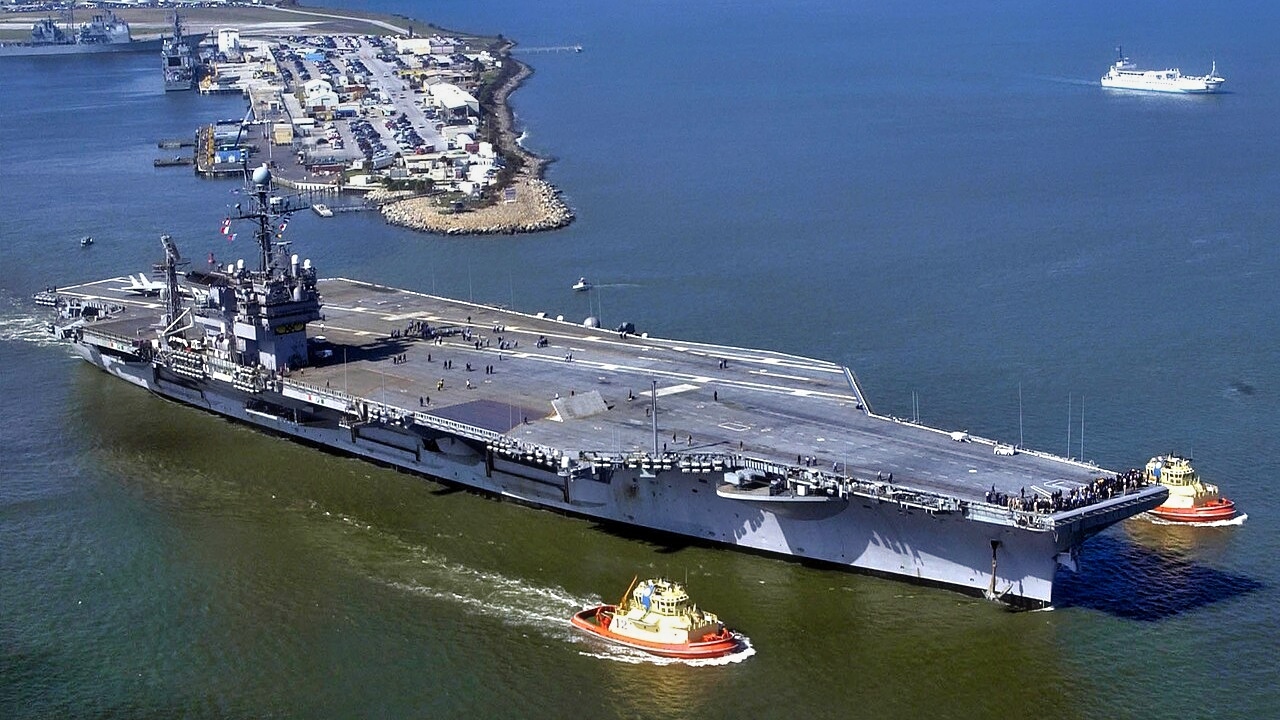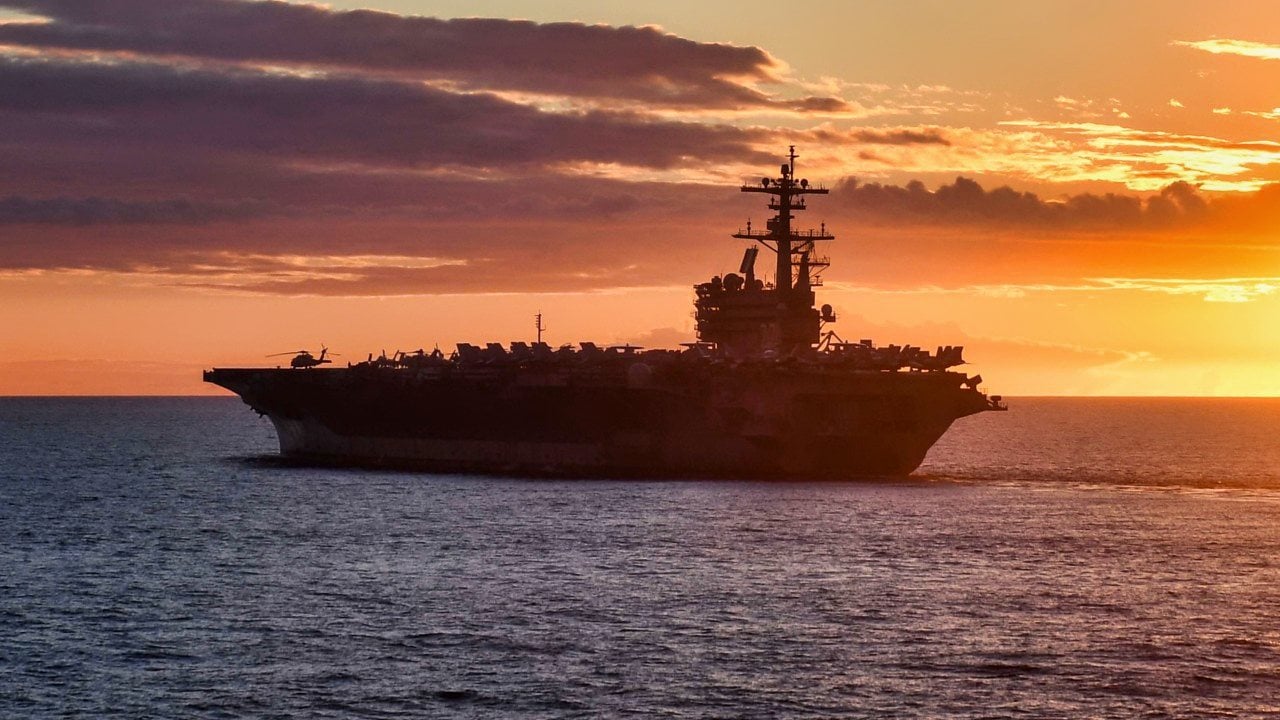
Medium Aircraft Carrier (CVV)Medium Aircraft Carrier (CVV) During the Cold War, US military planners proposed medium-sized aircraft carriers (CVVs) as a cost-effective alternative to the Nimitz-class carriers. Supported by Presidents Ford and Carter, the CVV aimed to replace the aging Midway class without burdening taxpayers. Despite its lower price tag and conventional power, the CVV was ultimately overshadowed by the more powerful and nuclear-powered Nimitz-class. The CVV program was briefly revived but failed to gain traction. President Reagan’s robust naval agenda sealed its fate. Concept The CVV was conceived as a smaller, more affordable aircraft carrier that could replace the Midway class. Its proponents argued that it would provide a cost-effective alternative to the Nimitz-class while still meeting the Navy’s operational requirements. Design The CVV was designed to be a conventionally-powered carrier with a displacement of approximately 50,000 tons. It would have had a crew of around 4,000 sailors and would have been capable of carrying a mix of fixed-wing aircraft and helicopters. Advantages * Lower cost than the Nimitz-class * Conventional power, which was seen as more reliable and affordable than nuclear power Disadvantages * Smaller size and airwing than the Nimitz-class * Lower speed and endurance than the Nimitz-class Fate The CVV program was canceled in the early 1980s in favor of the Nimitz-class. The Nimitz-class proved to be more efficient and effective than the CVV, providing greater airpower and requiring fewer support vessels. In retrospect, the larger Nimitz carriers have been seen as a more cost-effective and capable investment than the CVV would have been.
Summary and Key Points: During the Cold War, US military planners proposed medium-sized aircraft carriers (CVVs) as a cost-effective alternative to the Nimitz-class carriers.

-Supported by Presidents Ford and Carter, the CVV aimed to replace the aging Midway class without burdening taxpayers. Despite its lower price tag and conventional power, the CVV was ultimately overshadowed by the more powerful and nuclear-powered Nimitz-class.
-The CVV program was briefly revived but failed to gain traction. President Reagan’s robust naval agenda sealed its fate. In hindsight, the larger Nimitz carriers proved more efficient, providing greater airpower and requiring fewer support vessels.
At the height of the Cold War, when the US military was obsessed with countering the Soviet threat, and projecting power globally, war planners conceived of an idea that would be out of place in the contemporary US Navy: medium-sized aircraft carriers, or CVVs. The CVVs were proposed as an affordable alternative to the costly, behemoth Nimitz-class, something that could replace the Midway-class without straining taxpayers.
President Ford and President Carter, both Navy men, supported the CVV concept. Yet, the design was ultimately scrapped, with a full commitment made to the Nimitz-class, which still forms the backbone of the US carrier fleet today.
What could have been: Medium Aircraft Carrier
After the Vietnam War, the US military budget became restricted. In an effort to field an adequate fleet, the Navy’s Chief of Naval Operations, Admiral Elmo Zumwalt, backed a plan to introduce smaller and more affordable aircraft carriers. Each of Zumwalt’s carriers, the CVV, would cost just $1.5 billion – a bargain relative to what a Nimitz-class carrier would cost. The CVV’s affordable price tag was attractive, naturally, but the CVV was conventionally-powered, and nuclear-power was very much in vogue at the time.
The death knell for the CVV program was the ordering of the fourth Nimitz carrier – at least it seemed so, initially. But when President Ford canceled the Navy’s order for a fourth Nimitz, offering support for the medium-sized, conventionally powered alternative, the CVV plans were suddenly resurrected.
Ford lost the 1976 election, however (which would have marked his first presidential election win), and Jimmy Carter inherited the White House. Secretary of Defense Harold Brown encouraged Carter and the Navy to build a new carrier that was comparable to the conventionally powered, yet sizeable, USS John F. Kennedy. But Carter was not receptive to Brown’s proposal, arguing that smaller carriers with smaller airwings had lower life-cycle costs.
The CVV program failed to fully catalyze while Carter was in office, and when the peanut farmer was ousted in the 1980 election, Ronald Reagan assumed the White House with an anti-communist agenda that called for a robust naval presence. Accordingly, Reagan greenlit the fourth Nimitz, and the CVV plan was canned – again.
Probably for the best
Despite Carter’s argument that the smaller carrier had a lower life-cycle cost, the CVVs would have required two boats to deliver the airpower that one Nimitz could deliver. And two CVVs would have ultimately been more expensive, with respect to crew and support vessels, than just one Nimitz.

“One hull with a six-thousand-man crew was cheaper to operate than two hulls that required a total of nine thousand men—but collectively had just as many planes. A single carrier also required only one set of cruisers, destroyers and frigates as escorts. Finally, larger carriers could also generate more air sorties than a smaller carrier, and could operate more and larger aircraft,” wrote Kyle Mizomaki.
And so, the CVV would never be built, becoming an obscure concept that missed its production window.
About the Author: Harrison Kass
Harrison Kass is a defense and national security writer with over 1,000 total pieces on issues involving global affairs. An attorney, pilot, guitarist, and minor pro hockey player, Harrison joined the US Air Force as a Pilot Trainee but was medically discharged. Harrison holds a BA from Lake Forest College, a JD from the University of Oregon, and an MA from New York University. Harrison listens to Dokken.
All images are Creative Commons.